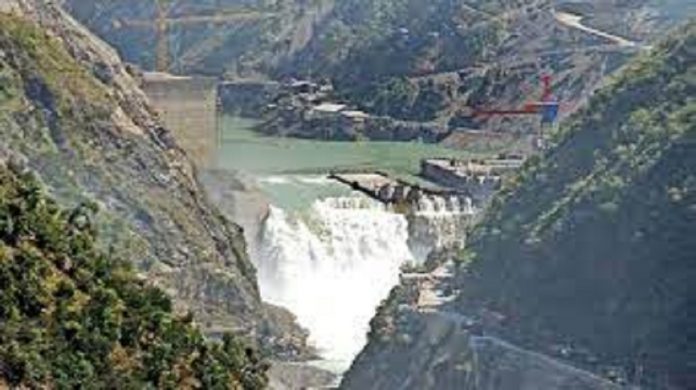ISLAMABAD: The next month, October, will see negotiations on the contentious water projects and the sharing of information on river inflows between Pakistan and India.
Pakistan has requested dialogue on the issue in a letter to India, wrote by
Syed Mehar Ali Shah, the Pakistani Indus Water Commissioner to his Indian counterpart.
The Indus Waters Accord is the framework for the discussions between the two parties about irrigation projects.
In May of this year, a Pakistani delegation travelled to India; now, India is traveling to Pakistan.
The Pakal Dul Dam as well as the Lower Kalnai and Kiru hydropower projects, each with a capacity of 1,000 MW, 48 MW, and 624 MW, respectively, will be discussed with New Delhi, according to the Pakistan Indus Water Commission (PIWC) office. All three of these projects are situated in Indian-held Jammu and Kashmir.
After the present hydroelectric projects are finished, Kishtwar, the most distant area of Indian-held Jammu and Kashmir, would become northern India’s primary power hub and produce close to 6,000 MWs of electricity.
In addition to being used in other areas of the disputed territory, the extra power generated in Kishtwar would also be sold to foreign nations.
After nine years of discussions between India and Pakistan with assistance from the World Bank, which is also a signatory, the Indus Waters Treaty was signed in 1960. Eugene Black, a former World Bank president, initiated the talks.
It is regarded as one of the most successful international treaties since it has endured numerous conflicts and tensions while providing a foundation for the development of irrigation and hydropower for more than 50 years.
The Indus, Jhelum, and Chenab rivers on Pakistan’s western border and the Ravi, Beas, and Sutlej rivers in India’s eastern border are divided up by the treaty. The treaty also grants each nation specific rights to use the rivers that are allotted to the other.
The Permanent Indus Commission, which has a commissioner from each nation, is a mechanism for cooperation and information sharing between the two nations over their use of the rivers that is outlined in the treaty.
The agreement also specifies different processes for resolving potential conflicts: “questions” are handled by the commission, “differences” are to be settled by a third-party neutral expert, and “disputes” are to be brought before a seven-member arbitral tribunal known as the “court of arbitration.”
India is granted unlimited non-consumptive use of the western river waters for activities including power generation, shipping, floating of property, fish farming, etc., as well as limited irrigation usage.
It lays out specific guidelines for India’s construction endeavors over the western rivers.
In order to make the best use of the water from the Indus system in an atmosphere of kindness, friendliness, and collaboration, the preamble of the treaty acknowledges the rights and obligations of each nation.
This hasn’t allayed Islamabad’s worries that New Delhi can inadvertently cause floods or droughts in Pakistan, particularly during times of conflict.
After India dumped 170,000 cusecs into the Ravi during the Pakistan floods of 2022, an incident that had already claimed more than 1,000 lives and displaced 30 million people before the release, this worry was voiced once more.
In recent years, India has developed extensive irrigation programs and built numerous upstream dams, claiming that its usage of water strictly complies with the Indus Water Treaty (IWT) that was signed between the two nations in 1960.
While 80% of Pakistani agriculture depends on the Indus River, Pakistan rejects several of these projects because it claims they violate the World Bank-mediated agreement on the distribution of Indus waters.
The two commissioners must meet at least once year, alternating between Pakistan and India, in accordance with the terms of the treaty between the two nuclear-armed neighbors.
Under the condition of anonymity, a representative of the Pakistani foreign ministry claimed that the Indian side had promised to organize trips and inspections following the flood season (June to September).
On May 31, 2022, in New Delhi, India, representatives of the Pakistani and Indian water commissions signed the PIC’s annual report.
Pakistan also brought up its concerns with Indian hydroelectric projects, such as the 1,000-megawatt Pakal Dul project on the Chenab River, and requested a response.
The Pakistani foreign ministry continued, “The Indian side was also encouraged to transmit advance flood-flow information in accordance with the Treaty’s stipulations and the practice in use since 1989 to 2018.”
The annual PIC report for the year ending on March 31 was prepared and signed by the two parties, according to the Indian Ministry of External Affairs. The next PIC meeting would take place in Pakistan on mutually convenient dates, it was further stated.
The World Bank mediated the signing of the Indus Water Treaty between Pakistan and India in Karachi in 1960.
In accordance with the treaty, Pakistan has jurisdiction over the waters of the three western rivers, the Indus, Chenab, and Jhelum, while India is granted sovereignty over the waters of the three eastern rivers, the Beas, Ravi, and Sutlej.
In accordance with the agreement, both nations may request arbitration from the World Bank in cases of disagreements on the use of water resources.
In August 2016, Pakistan asked the World Bank to set up an arbitration tribunal for two Indian projects that were under dispute: the 850-megawatt Ratle hydropower project and the 330-megawatt Kishanganga hydropower project.
Read more: France agrees to host int’l conference aimed to support Pak to reconstruct flood-affected areas


